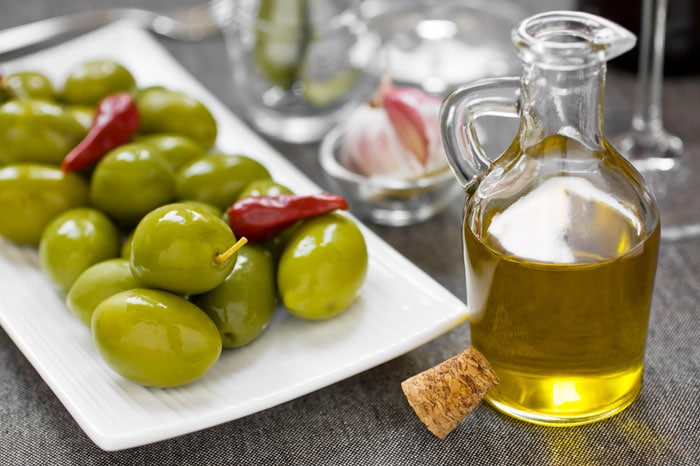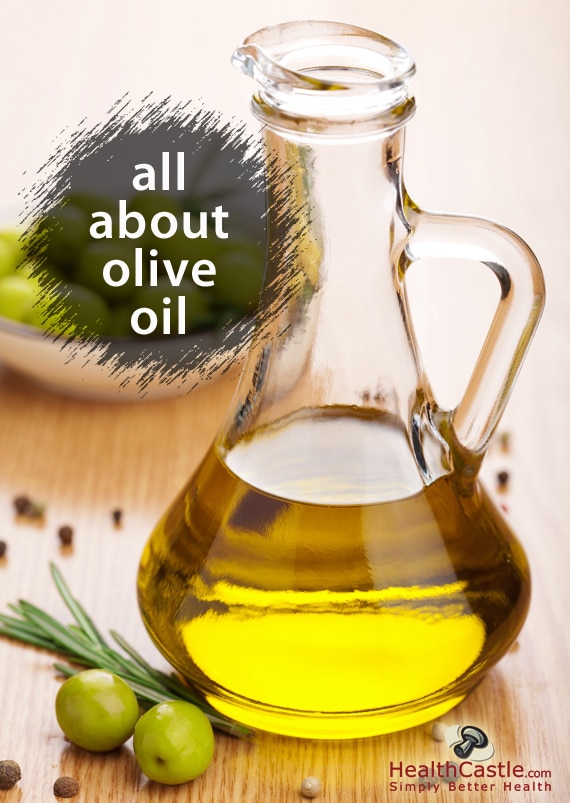
Written By: Sofia Layarda, MPH
Title: Master of Public Health
Alumni: University of California, Berkeley
Last Updated on:


So you’re dropping by the grocery store for a quick trip to pick up a bottle of olive oil, and what do you see? Shelves of olive oil labeled with terms such as extra virgin, light, or pure. Why all these different labels – and should you use the same variety for cooking and for salads?

Table of Contents
Must be taken from the first pressing of the olive. The free fatty acid content, which indicates the acidity of the oil, must not exceed 0.8 g per 100 g. The lower the acidity level, the more desirable the oil becomes. In addition, the oil must be obtained only through mechanical means (pressing) without the use of heat or chemicals in extraction. Extra virgin olive oil has the highest levels of antioxidant polyphenols, tends to be a deeper green color, and has the strongest flavor. It also has a lower smoke point and is the most expensive. Instead of cooking with it, use it in salads or to drizzle over food before serving.
Must also be taken from the first pressing of the olive. However, the free fatty acid content (acidity level) can go as high as 2 g per 100 g. Virgin olive oils that have poor flavor, odor, or acidity exceeding 2 g per 100 g cannot be sold without further processing.
Obtained from further refining of virgin olive oils of poor quality, such as those with very high acidity or flavor defects. The refining process may include the use of charcoal or chemical or physical filters. Refined olive oil is generally colorless, flavorless, and odorless. It has an acidity level of no more than 0.3 g per 100 g after processing. This grade of olive oil is allowed to have alpha-tocopherol (an antioxidant) added to help delay rancidity. Oils become rancid when they are oxidized.
A blend of refined olive oils and virgin olive oils deemed fit for consumption without further processing. It has maximum acidity set at 1 g per 100 g and meets the odor or flavor characteristics of virgin olive oil. This grade of olive oil is allowed to have alpha-tocopherol (an antioxidant) added to help delay rancidity. This is the type of olive oil you might find labeled with the term “pure.”
In addition to olive oils, buyers in some markets may see a type of oil called olive-pomace oil. This is oil derived from further treatment of the crushed olives (pomace) after the initial oil from the first pressing has been extracted. This oil may be obtained by the use of solvents and must be further refined so that it is edible. Refined olive-pomace oil that is blended with a small amount of extra virgin olive oil can be sold as “olive-pomace oil” but cannot be called olive oil.
In addition to the actual grade of olive oil, you may also see the following terms on the bottle:
All olive oils are high in unsaturated fats. The main differences between a higher-grade olive oil and a lower-grade one are the flavor, color, odor, and polyphenol content. Some (but not all) of the polyphenols in extra virgin olive oil degrade when subjected to higher temperatures. For high-heat cooking, use plain or light olive oil. Reserve the extra virgin olive oil for no-cook finishes such as salads or to drizzle over an appetizer or entree right before serving.
Alumni: University of California, Berkeley – Sofia believes in bringing back fun and pleasure into everyday eating. She loves cooking, and is constantly experimenting with ingredients, creating recipes and trying them out on family and friends. Her latest interest lies in finding realistic and practical ways of environmentally-friendly food/eating habits.
antioxidant, grocery aisle, heart smart, olive oil